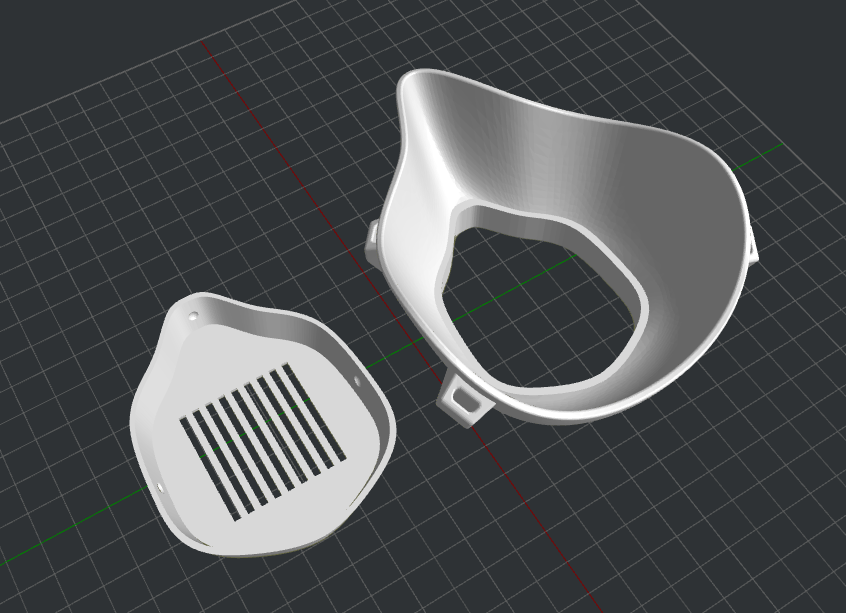DIY Room Air Filter or Lab Filter
- Matt Thomas

- Jul 8, 2022
- 3 min read
Updated: Jul 13, 2022
It has been very interesting to see how humanity has flip flopped their belief system of science just based purely on social media posts. Google has made us stupid, so has the University of Youtube, Facebook, and most social media. Its supper easy to create my own fake Facebook account and pretend to be a Doctor of Medicine or science without any accreditation. I have had countless posts on my feed from people pushing the most ridiculous ideas and "facts" about BASIC science that they should know from school. People are not using books, encyclopedias, or even emails to professors at their local universities anymore for correct information. Its all being filtered through the almighty information superhighway. I LOVE the internet just as much as the next guy, hell, I was a network engineer for large corporations, so i know how it all works. BUT, what i have learned through out all my learning, always keep your textbooks from school, and your notes. Real books with real answers to this very pandemic. For example, pre covid, since early 80's studies for masks have been done over and over and over, and all the 3rd party independent tests show that masks do indeed capture, filter, and reduce the risk of viruses immensely. Try finding any type of information during covid on masks, you will see a slew of studies stating "they dont work" so i guess when i go in for surgery, ill just tell my nurses and Docters to not worry about gloves or a mask:) But then the naysayers will say "but Docters wear the masks to protect them from you, not you from them" So your saying that the material is magic and only filters air in one direction??? thats not at all how material works. The material is the same on both sides....
Moving forward, lets build our own room filter that will move close to 900 cubic feet of air per minute. This device is portable, and can clean a room in no time. it will do a full air exchange every 10 minutes, even less for some rooms. These filters work really well, especially if in the same room as an ill person. Place it by them and it will collect the aerosols they breathe out that contain a virus. The DIY filter can also filter more than just viruses. Since we will be using at least a MERV 13 filter, it will filter smoke, mites, bacteria, viruses, virus carries and anything to the 0.2ish microns.
This is a super easy project and costs less than $100 to make. That seems like a lot of money, but considering the benefits from it, it far outweighs the cost, especially if you can get the supplies from a wholesale store such as Costco or Sams.
Supplies: 4 3M advanced allergen 1500 filters or higher. cardboard box fan with a high setting Hot glue or duct tape
the image below shows exactly what is needed to filter the air. It is pretty straight forward. You do not need the front cardboard shroud piece for this to work. For the back, just use a single cardboard piece that the 4 filters will attach to. If you wanted, you could use a 5th filter for the back, just add some sort of feet to the filter that faces the floor so that it keeps it off of said floor.. Some designs have had users just attach 1 filter to the back of the fan, even though this works, you will burn your motor out faster due to to much pressure. See, pressure is force/area. So the more filter area you have, the less pressure that is being pulled because the larger the denominator in the fraction (surface area), the smaller the end result or in our case a smaller pressure, meaning less work for the motor. Just remember to have the air flow arrows point inside the filter box you make.
Once you have made these filters, you can use them for clean room environments for electronics, or home lab setups. One way of using them is to put the fan in the window to blow the new filtered air out. This cleans the room in a different way. A shroud, that's the thing that goes on last over the fan, is absolutely NOT needed. Since the fan is PULLING air through the filters, you have no negative space to deal with. If you reversed the fan, so that is PUSHED the air through the filter (bad idea) like a car radiator, you then would want a shroud. Negative space is the area where the fan blades are not, usually the corners. It can create vortexes and air pockets at those locations, but since we are pulling air through the filters, we don't care.





